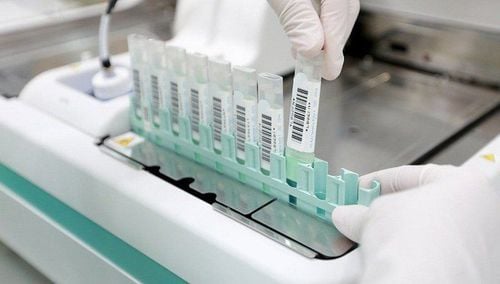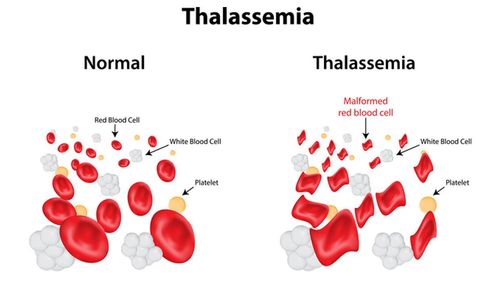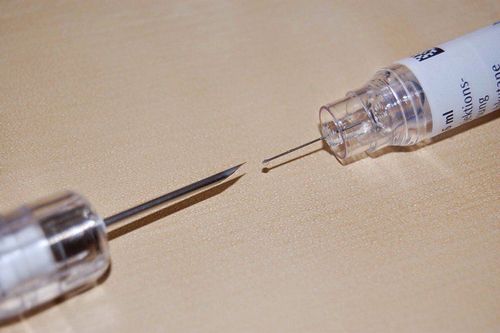This is an automatically translated article.
Article by Specialist Doctor I Nguyen Thi Minh Thuyen - Laboratory Department - Vinmec Danang International Hospital
The classification of prostate cancer risk groups in patients who have been diagnosed with cancer will help doctors decide on the optimal treatment plan.
1. Prostate cancer risk groups
For cancer that has not spread (stages I - III), many doctors now use information such as tumor grade (T), PSA levels, and prostate biopsy results to divide the risk of cancer. prostate cancer into groups:
1.1 Very-low-risk Tumor is very small, not felt on examination, can only be seen in a small area and does not grow outside of the prostate (cT1c) Histological group 1 (Gleason score of 6 or less) Low PSA (less than 10 ng/ml) The tumor usually grows very slowly and does not cause any symptoms or other health problems 1.2 Low risk (cT1c) low-risk) Tumor that has not grown outside the prostate, but is slightly larger (cT1 to cT2a) Histological group 1 (Gleason score of 6 or less) Low PSA (less than 10 ng/ml) 1.3 Moderate risk intermediate-risk U can be felt on physical examination or visible on imaging tests. Tumor found in more than half of one side of the prostate (cT2b) or on both sides of the prostate (cT2c) And/or histological group 2 or 3 (Gleason score of 7) And/or a PSA score of 10 - 20 ng/ml 1.4 High-risk Tumor has grown outside the prostate (cT3a) Or histological grade 4 or 5 (Gleason score 8 to 10) Or PSA score > 20 ng/ ml 1.5 very-high-risk This group refers to tumors that have progressed, recurred, or spread to nearby lymph nodes and have one or more of the following features:
Tumor has spread to seminal vesicles (cT3b) or into adjacent tissues adjacent to the prostate (cT4) Histological grade 5 (Gleason score 9 or 10) 2 or 3 of the features in the high-risk group (see above) More than 4 biopsies have a histological grade of 4 or 5 (Gleason score of 8 to 10) Risk grouping helps determine if additional testing is needed and select first-line treatment options.
2. Other methods of prostate cancer risk assessment
Besides the above risk classification, medicine is still searching for the best types of tests to decide the optimal treatment plan for prostate cancer. Your doctor may recommend that you do one of the following methods before choosing a treatment. Ask your doctor for a detailed explanation of what the results mean and how accurate they are.
Gene and protein testing
With localized prostate cancer (which has not spread outside the prostate), it is often difficult to know how quickly the disease is likely to grow and spread. This makes it difficult for doctors to decide whether the disease needs immediate treatment, and which method is optimal. In this case, a test to see which genes (or proteins) are active inside the prostate cancer cells are needed. These tests include: Oncotype DX Prostate, Prolaris, ProMark, and Decipher.
Oncotype DX: Determines the activity of certain genes in prostate cancer cells (taken from biopsy tissue) and gives results as a scale of 0 – 100. A higher score indicates cancer more likely to develop a rapid spread. Prolaris: Evaluation similar to Oncotype DX ProMark: Determines the activity of a set of proteins in prostate cancer cells (taken from biopsy tissue) and gives results that help predict the likelihood of cancer developing and spread rapidly. Decipher: For those who need surgery, taking tissue samples for testing can determine the activity of certain genes in prostate cancer cells. From there, predict the risk of cancer recurrence in other parts after surgery. Therefore, this gene test should be considered after prostatectomy. With modern and synchronous automatic and semi-automatic testing equipment of famous brands such as Beckman Coulter, Roche, Thermo, Siemens, Biomeriux... Laboratory Department of Vinmec Danang International General Hospital undertake biochemical tests - immunology, hematology - blood transfusion, microbiology and pathology from basic to advanced and specialized. In particular, the Faculty has a microbiology laboratory that meets the standards of a Level II Biosafety Laboratory with a pressurization system and a HEPA filter system for the entire area of the rooms. The tests at Vinmec Da Nang are performed according to standard procedures, strict quality control, accurate results with fast response time, a reliable basis for doctors to choose treatment regimens. optimal for the patient.
Please dial HOTLINE for more information or register for an appointment HERE. Download MyVinmec app to make appointments faster and to manage your bookings easily.
Reference article source: American Cancer Society














